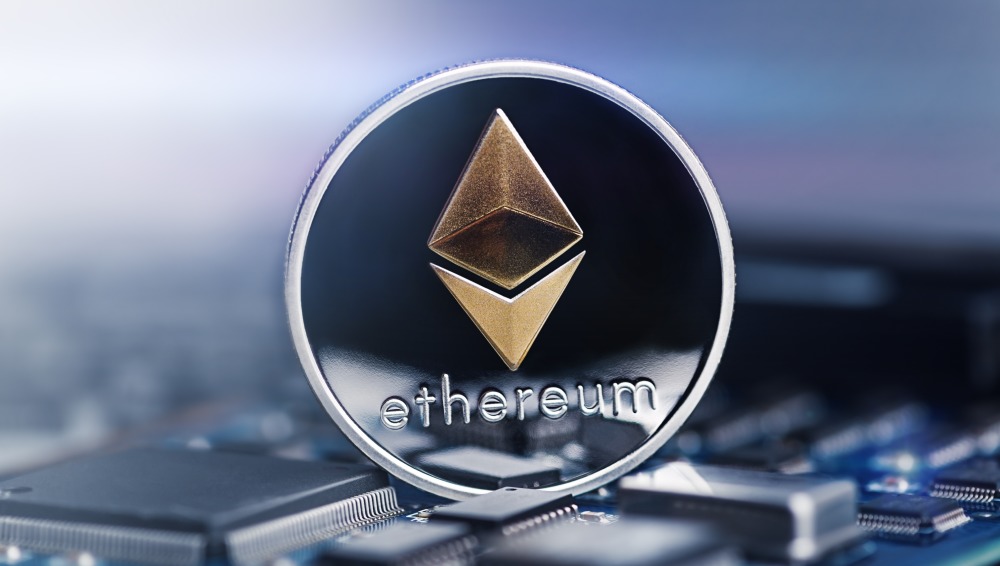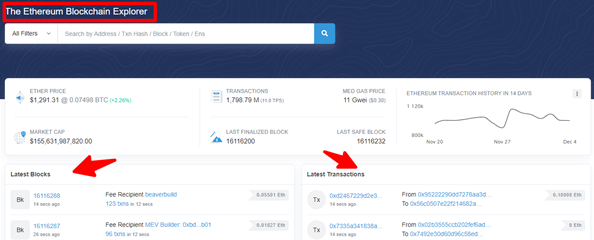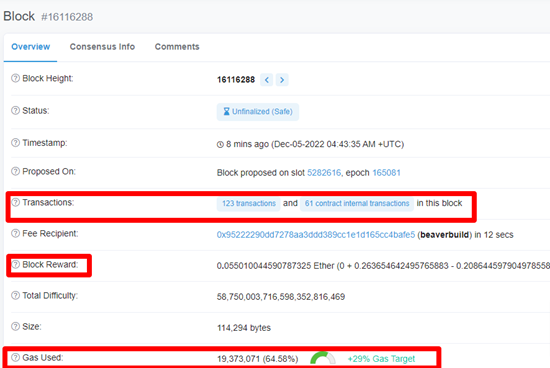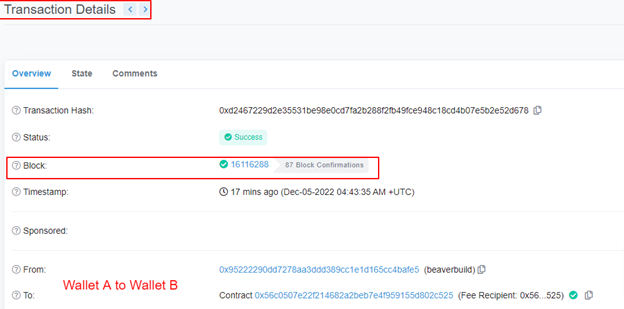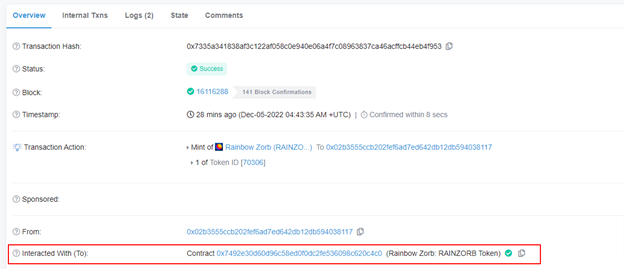Quick Summary:
- Etherscan is one of the most powerful utilized to explore different stats of the Ethereum Network.
- This tool allows users to discover transactions, blocks, smart contracts, and several other on-chain available data.
- Users will need a specific transaction ID, wallet address, or some other transaction detail to track the transactions.
The Ethereum network equivalent of Google is Etherscan. Use this robust database to see NFTs, monitor your Dapp links, follow Web3 transactions securely, find any unusual behavior, and obtain full data about your Ethereum wallet. It can also be used to detect suspicious activity, guard against Web3 frauds, and view fraudulent behavior.
How You Can Use Etherscan?
Following are some ways in which you can use Etherscan:
Block Explorers:
Ethereum is made up of “blocks” that make up a “chain,” each of which contains transactions that serve as public knowledge of the movement of currency within the system. A block explorer called Etherscan allows users to view the information kept on Ethereum.
Landing Page:
First, we see a few fundamental ETH statistics and two columns for the most recent blocks and transactions (txns). Starting with block 0, which was generated on July 30, 2015, each block is listed in the standard format. A 64-character “hash,” or ID, is specific to each txn.
Navigating Blocks
In reference to its place in the “chain” of blocks, the block number is often referred to as the “block height.” Each block provides a number of details, like the time it took to mine it, the block incentive, the cost spent in ETH charges, and more.
More About Blocks
Clicking on transactions in the previous picture will take you to the total transaction details in a blockchain. A transaction (txn) can be as basic as an ETH exchange or as complicated as the creation of an NFT, conducting a DEX trade, or adding tokens to a liquidity pool.
Navigate a Simple Transaction:
Navigating through a simple blockchain will let you know the time of the transaction, wallet addresses, and the block number in which the transaction is sent.
DEX transactions
The signing wallet (0x0d) is still listed in the From field of a more complicated transaction, but the contract the wallet interacted with is usually listed in the “To” field. DEX Transactions are critical.
We can observe how the txn connects with the pool agreement by browsing through the event logs. Etherscan decrypts the information from the hex code and accomplishes all the laborious work on our behalf.
How to Utilize this Information?
Lastly, the enjoyable part. We may use the information we have gained to get an advantage now that we understand what is stored in a txn and how to read it. It’s time to follow the money right now. Two easy methods:
- Monitoring whale wallets
- Monitoring critical contracts
Even though vital contracts differ for each protocol, it is always important to keep an eye on crucial DeFi infrastructure. Bear in mind that whales require water. Three of DeFi’s DEX pools are the deepest:
- Curve 3pool
- Uniswap DAI/USDC
- Curve ETH/stETH
It is clear from the statistics above that the transaction was successful and had a sufficient number of approvals. You might also glance into the wallet of the recipient to see how your transaction is doing. To do this, return to the search field and enter the receiving wallet address.
Conclusion
This article barely touches the surface of what Etherscan’s incredible capabilities can achieve. Etherscan is one of the most popular tools available in the crypto ecosystem.
Disclaimer: This article is provided for informational purposes only. It is not offered or intended to be used as legal, tax, investment, financial, or other advice.

